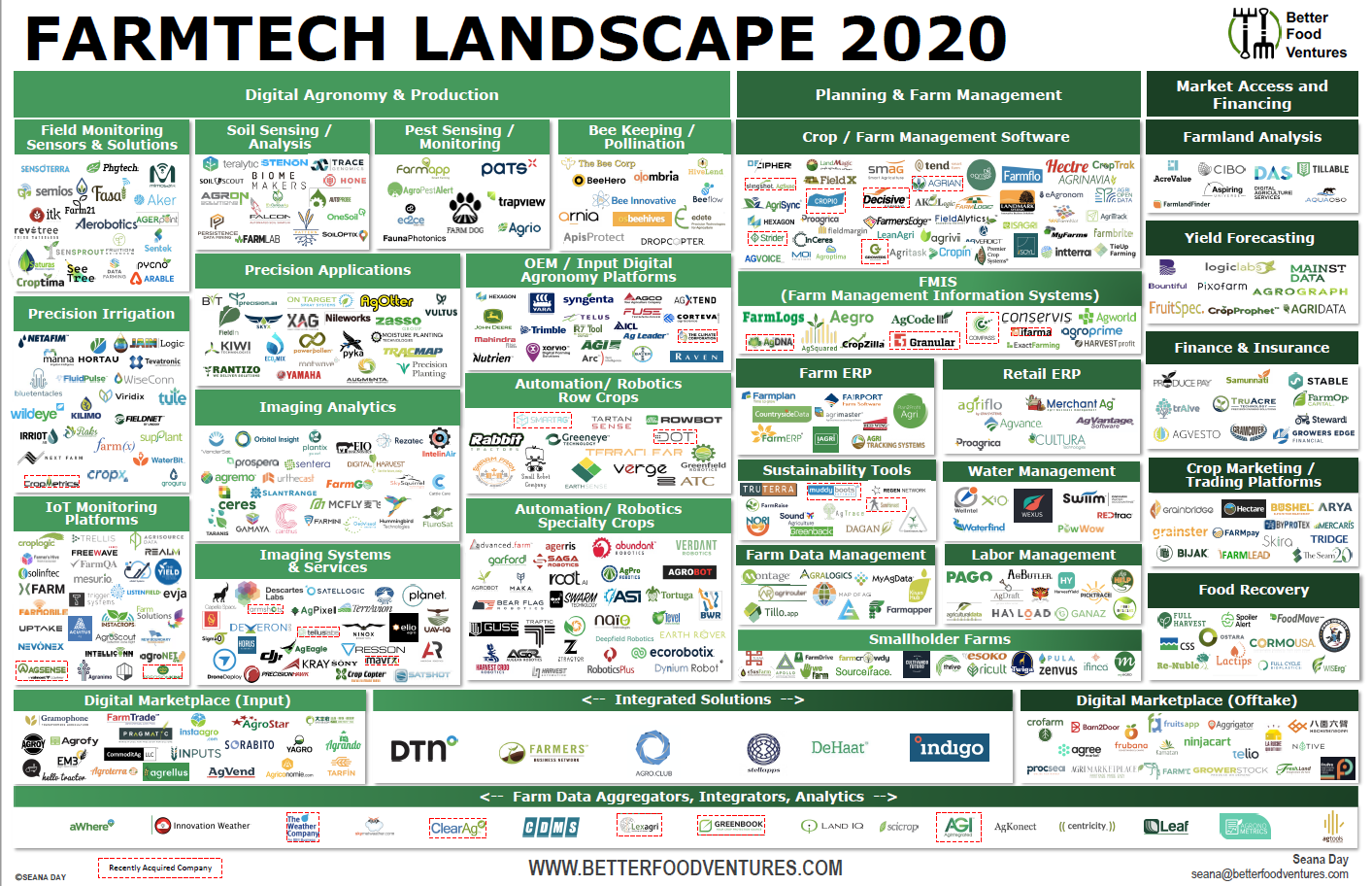The ‘4th Industrial Revolution’ term has been at the forefront of discussions regarding Technology for some time now. As the least digitised industry globally, Agriculture is attractive to an overabundance of capital. There is a lot of expectation on farmers to collect, collate, and store farm data digitally. The possibility of being informed is driving new expectation for information within the supply chain (delivered in the form of data). If we consider that revolutions are enabled when several factors are present; urgency, environmental and climate issues are front-and-centre.
Opportunity – The basic food need is still unmet for many in the world, and the pressure to produce more food is increasing with bulging population projections. This means we are making headway in the availability of technology, the capacity to adopt and transform, and investment capacity. However we are somewhat struggling with the desired return on investment (ROI).
Corporate, financial, Government, social and market push down pressure have changed the agricultural outlook. This is no longer a question of ‘Do we need a low–carbon future?’ It is now a question of ‘How quickly can we get to Net-Zero to limit any further temperature rises?’.
Likewise, there is a sense of urgency to demonstrate the ethical, efficient, and sustainable practices of all agricultural industries. As corporate manufacturers are being held accountable for their emissions, financial institutions are scrutinised for the climate impacts of their portfolio of customers. Market access incentives exist now for those that can demonstrate sustainability. There are a suite of dedicated software and service providers supporting, transitioning, and accelerating farmers to adopt regenerative farming practices. Demonstration requires facts and these facts will come from data that is generated at the coal face of operations. Data is generated by technologies.
Farmers now have significant choice regarding digitally enabled technologies. Furthermore, as products evolve, so too is the way in which data is integrated, interchanged, aggregated and migrated. Benefits include: greater and deeper insights, smooth processes, the breaking of data silos, efficient reporting, and creative decision support solutions.

Seana Day, Better Food Ventures produces the Farm Tech Landscape map bi-annually. There are now more than 1600 ‘inside the farm gate’ technology products on the market. Couple that with the improvements in connectivity, support to improve digital literacy and adoption, a reduction in cost barriers and a general desire for more information and we are well primed for the next revolution.
Returning back within the farm gate, farmers should not feel pressured to digitally transform all at once. However, today farmers should be focusing on how what knowledge they need, what answer they seek, and what challenge needs resolve? What are the productivity and efficiency gains if I invest in product A, Q and T? Consider more holistically, what data do I need to bring together now that enables a solution.
Author | Brooke Sauer, IntellectAg
